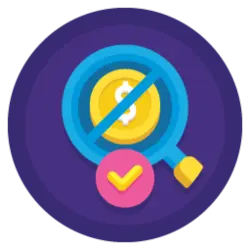While we once lived in a world that ran via exchanging physical cash, printed dollar bills have quickly become a scarce payment method. Instead, consumers and businesses alike are opting for electronic transfers. ACH payments lead this trend and were responsible for 29.1 billion payments valued at $72.6 trillion in 2021. To accept and properly handle ACH transfers, merchants must seek to understand the ins and outs of this payment system. One of the toughest concepts to comprehend in ACH transfers is ACH returns. In this article, we’ll take a closer look at the specific ACH return code R38: Stop Payment on Source Document.
What Are ACH Payments?

Automated Clearing House (ACH) payments are electronic bank-to-bank transfers. These transfers use banks and other financial institutions in the United States to deliver funds from one account to another. The ACH network oversees all ACH transfers. This payment method is strictly electronic with no need for any sort of physical transaction.
What Are ACH Returns?
ACH returns occur when the ACH network is unable to successfully collect funds from the customer’s bank account. When a bank initiates an ACH return, funds cannot transfer successfully until the source of the problem is resolved.
What is an ACH return code?
An ACH return code accompanies each ACH return. The code includes three characters. The first character is the letter ‘R’, which stands for ‘return’. The following characters consist of a two-digit number. This numeric code indicates the reason for the return.
NACHA
The National Automated Clearing House Association (NACHA) governs the entire ACH network. NACHA created and standardized all 85 ACH return codes. The association designed these codes to be consistent amongst banks, payment processors, and merchants so that all included parties understand the meaning behind each return code. NACHA manages return codes as well as the ACH network setting guided solutions for each return code message.
ODFIs and RDFIs
The Originating Depository Financial Institution (ODFI) operates on one end of an ACH transfer, while the Receiving Depository Financial Institution (RDFI) stands on the other. Both ODFIs and RDFIs must procure prior approval from an ACH operator to conduct ACH transfers. The Clearing House and the Federal Reserve both function as ACH operators. The ODFI works on behalf of the originator who initiates payment, while the RDFI represents the business or individual receiving the funds. Most major banks in the US have ODFI and RDFI approval. Additionally, payment processors, payment gateways, and ACH payment APIs, as well as other financial institutions, work as ODFIs and RDFIs for their clients.
What Does ACH Return Code R38 Mean?
Return code R38 appears when a “stop payment” order has been issued on a source document. NACHA designed code R38 for use with ARC Entries. This code enables the RDFI to return an ARC entry when the customer notifies their RDFI that a stop payment order was issued on the source document of the payment, but the stop order was not enforced and instead returned as R38. Return code R38 works as a safety net when stop payment orders are placed on their check systems rather than their ACH systems. If these systems are not connected, the RDFI may not find the stop order until the customer receives their statement.
Formal definition
The ACH return code R38 stands for: Stop Payment on Source Document.
Solutions to Fix R38 Return Code
ACH return code R38 has an extended return time of 60 days from initiation. An RDFI that uses return code R38 must transmit the return entry by its ACH operator’s deposit deadline so that the entry is made available to the ODFI no later than the opening of business on the banking day 60 days from the settlement date.
This return code cannot be handled at the merchant level. The merchant and the customer’s associated banks must address this issue. If this delays the delivery of goods or services to your customer, contact the customer and explain the ongoing problem. Assure the customer that the ODFI and RDFI are aware of the issue and working to resolve the problem. If necessary, you may offer to accept an alternative form of payment from your customer.
Final Thoughts
ACH return code R38 sounds quite complicated; however, it is a less commonly occurring return code. Rest assured that this code is handled at the banking level. While you may not always be responsible for addressing the concerns relating to each ACH return, familiarizing yourself with all 85 ACH return codes helps ensure a smooth and easy ACH transfer process. Note that these codes change and evolve as NACHA works to clarify, update, and add to the ACH return code list. Staying up to date with this list helps merchants stay on top of their ACH payment processing and continue to operate a smooth ACH transfer system for their business.




